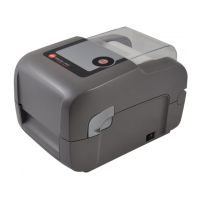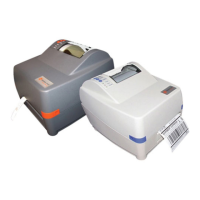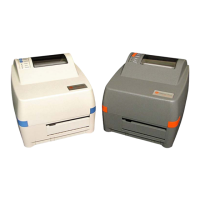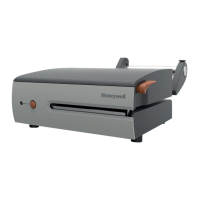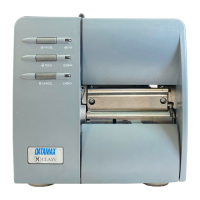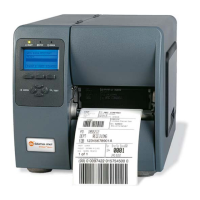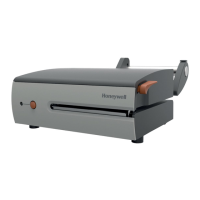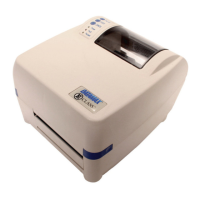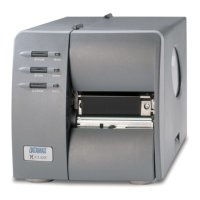Extended System-Level Command Functions
38 Class Series 2 Programmer’s Manual
smooth scalable font processor will remain unchanged. The allocation must be at
least 15 (60KB) to print scalable fonts, and at least 30 for double-byte fonts. The
number that follows the S is a decimal number (up to four digits) that specifies the
size in 4 KB blocks to assign to the smooth scalable font processor. Any value less
than the minimum requirement results in the amount assigned to be zero (0),
thereby disabling the printing of smooth scalable fonts. The recommended value is
0025 (100KB).
W Represents the start of a sequence (up to five characters) that sets the printable
label width. Setting a width smaller than the natural (maximum) width of the printer
effectively extends printable label length. This field is optional; if it does not appear,
the current printable label width is left unchanged. The number that follows the W is
a decimal number (up to four digits) that specifies the printable label width in either
100
ths
of an inch or in millimeters, depending on the current units setting of the
printer (imperial or metric). If the value specified exceeds the printable width of the
printer, the printable label width is set to the maximum. If the value specified is less
than the minimum value allowed (200) then the printable label width is set to the
minimum allowed value.
•
Label printing requirements may be computed as bytes (label print length times
width allocation times print head resolution divided by 8). For maximum throughput,
the memory allocated should allow for a minimum of three times the computed
requirement, or the available label length (as determined by <STX>KQ command)
should be three times the label print length; and,
• These commands will result in a system reset for the EX2.
STX K}E Empty Sensor Calibration (Non-Display Models only)
This command causes the printer to determine and save the calibration value for an
empty media sensor condition. This calibration function should be performed when no
material is installed in the media sensor. Depending upon the printer model, different
front panel LED flash sequences and printer responses (below) will indicate calibration
progress and outcome; see the corresponding printer operator manual for LED flash
sequences details.
Printer Response Alternate
REMOVE STOCK[CR] N/A
ENTER TO CONTINUE[CR] N/A
PASSED CALIBRATION[CR] FAILED CALIBRATION[CR]
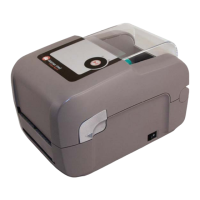
